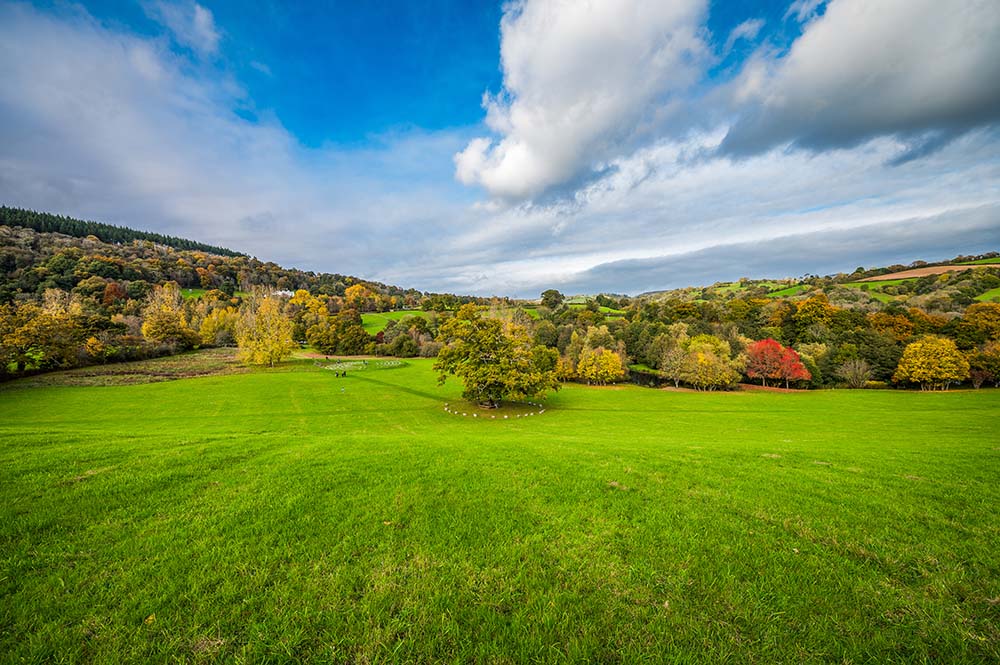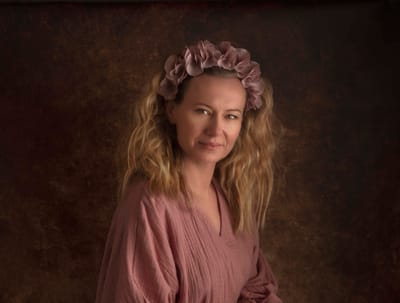Can Devon truly be the hidden gem for fine art photography, or is it merely basking in borrowed light? With its dramatic coastlines and the enchanting allure of Dartmoor National Park, Devon presents a captivating canvas for photographers seeking to elevate their creative portrait photography. This post delves into the unique features that make Devon a standout location for artistic exploration. It also explores the vibrant local photography scene, highlighting figures like Sebastien Coell. Together, these elements foster innovative portrait techniques, transforming Devon into an inspiring hub for creatives.
Exploring Devon’s Photography Scene: A Creative Portrait Guide
Devon’s landscape is a tapestry of natural beauty, offering photographers a rich canvas to explore fine art photography. From the striking coastlines that stretch along its borders to the rugged expanses of Dartmoor National Park, the region provides a myriad of settings that are perfect for portrait photography. The dramatic cliffs, sandy beaches, and rolling moors offer diverse backdrops, enhancing the visual storytelling potential of each shot. This vast array of environments allows photographers to capture the unique essence of their subjects, making Devon an ideal location for those seeking to blend natural beauty with personal narratives in their portraits.
The local photography culture in Devon is vibrant, with a community that thrives on creativity and innovation. Sebastien Coell, a prominent figure in this scene, exemplifies the spirit of Devon’s photographic landscape. His work blends evocative imagery with storytelling, capturing the mystical qualities of the area’s natural features. Coell’s photography not only showcases the region’s stunning vistas but also tells the stories interwoven within its landscapes, inspiring other photographers to explore and experiment with their own styles. The presence of such influential artists elevates Devon’s status as a hub for creative portrait photography.
These elements of landscape and culture converge to foster the development of creative portrait techniques within Devon. Photographers are encouraged to utilise the varying light conditions provided by the coastal and inland settings to create dynamic and compelling images. The combination of natural beauty and a supportive artistic community cultivates an environment where photographers can push the boundaries of traditional portraiture. By embracing the unique characteristics of Devon’s scenery and the innovative spirit of its photographers, one can develop a distinctive approach to capturing portraits that resonate with authenticity and artistic expression.
Techniques for Capturing Fine Art Portraits in Devon
What makes natural light beneficial for portrait photography in Devon? Devon’s natural light offers a soft and ethereal quality that enhances the authenticity and emotion of portraits. The region’s varied landscapes, from coastal shores to the moorlands of Dartmoor, provide ample opportunities to play with light and shadow. Photographers can take advantage of the golden hour when the light is warm and diffused, creating a flattering glow on subjects. The changing light conditions throughout the day offer different moods and atmospheres, allowing for dynamic compositions and creative expression.
- Timing for optimal natural light
- Positioning subjects to enhance light effects
- Using reflectors for balanced illumination
- Incorporating backgrounds to add depth
- Creating mood with shadows
How can Devon’s landscapes be creatively incorporated into portrait compositions? By using the region’s diverse settings, photographers can add a narrative dimension to their portraits. The dramatic coastlines and serene moors serve as captivating backdrops that enrich the storytelling aspect of the photograph. Photographers are encouraged to experiment with perspective, positioning subjects to interact with the landscape, either by integrating them seamlessly into the scene or contrasting them against it. This approach not only creates visually striking images but also imbues the portraits with a sense of place and character, reflecting the unique spirit of Devon.
Devon’s Top Locations for Creative Portrait Photography

Start Point Lighthouse
Start Point Lighthouse offers panoramic views that serve as a dramatic backdrop for portrait photography. The lighthouse’s position on a narrow peninsula allows photographers to capture sweeping seascapes and atmospheric skies. The optimal time for photography here is at sunrise when the light is soft, and the hues of the sky add a magical quality to portraits. This location provides an opportunity to blend human subjects with the grandeur of the natural world, making it a standout spot for capturing evocative images.
Wembury Beach
Wembury Beach is renowned for its sandy stretches and intriguing rock formations, making it a prime location for striking portrait backdrops. The beach’s unique landscape allows for creative composition, especially at sunset when the light casts long shadows and enhances the textures of the rocks. Winter sunsets at Wembury provide particularly vivid colours, offering a perfect setting for dramatic and visually compelling portraits. This location’s versatility makes it a favourite among photographers seeking to incorporate dynamic elements into their work.
The Daymark
The Daymark, an octagonal limestone tower, stands out as a year-round attraction for photographers. Its distinctive shape and the surrounding landscape, including lush barley fields, provide a variety of compositional opportunities. The juxtaposition of the man-made structure against the natural environment enriches portrait compositions, offering both contrast and harmony. Photographers can use the changing seasons to capture different moods, with spring and summer providing vibrant green backdrops while autumn brings a warm, golden palette.
Westcombe Beach
Westcombe Beach is characterised by its dramatic headlands, creating an awe-inspiring setting for portrait photography. The best conditions for capturing the beach’s unique features occur at low tide when the rock formations are most visible. These natural structures provide depth and interest in portraits, allowing photographers to craft images that are both intimate and expansive. Westcombe Beach’s rugged beauty invites exploration and creativity, making it an ideal location for photographers looking to push the boundaries of traditional portraiture.
Dartmoor National Park
Dartmoor National Park’s varied terrain offers endless photographic potential with its vast moorlands, granite tors, and ancient woodlands. This diverse landscape allows photographers to experiment with different styles and compositions, from capturing the moody and mysterious atmosphere of the moors to the tranquil beauty of its rivers and valleys. Dartmoor is a canvas of natural beauty that can be used to evoke a wide range of emotions and narratives in portrait photography, providing both challenge and inspiration for those who venture into its wilderness.
Mastering Natural Light and Creative Composition
Natural light is a fundamental aspect of portrait photography, offering a versatile and dynamic tool for photographers in Devon. The quality of natural light varies throughout the day, influencing the mood and tone of the images. During the golden hour, just after sunrise and before sunset, the light is softer and warmer, creating a flattering effect on the subject’s skin and enhancing the overall ambience of the photograph. This time of day is ideal for capturing portraits that exude warmth and intimacy. Photographers can also experiment with different weather conditions, such as the diffuse light on a cloudy day, which reduces harsh shadows and provides a gentle illumination, perfect for capturing subtle expressions and details.
Creating artistic compositions with light and shadow dynamics is essential for evoking emotion and enhancing the narrative of a portrait. By understanding how light interacts with the subject and surroundings, photographers can craft visually striking and emotionally resonant images. Shadows can be used creatively to add depth and contrast, guiding the viewer’s eye to the focal point of the portrait. Positioning the subject about the light source allows for manipulating shadows to highlight certain features or create a dramatic silhouette. This interplay between light and shadow adds complexity to the composition and imbues the portrait with a sense of mystery and intrigue.
Enhancing Portraits Through Post-Processing
Why is post-processing important in fine art photography? Post-processing is essential as it allows photographers to refine and elevate their images, ensuring a polished and professional appearance. This stage is where the final touches are applied, enhancing the visual appeal and emotional impact of a portrait. By adjusting elements such as exposure, contrast, and colour balance, photographers can bring out the best in their subjects, highlighting the unique features and mood of the photograph. Moreover, post-processing provides an opportunity to correct any imperfections and tailor the image to align with the photographer’s artistic vision, ensuring that the final product meets the highest standards of fine art photography.
Which software is recommended for portrait retouching? Adobe Lightroom and Photoshop are the preferred editing tools for photographers, offering a comprehensive suite of features for retouching and creative enhancements. Lightroom excels in managing and editing large volumes of images, allowing for efficient workflow and consistent results. It provides powerful tools for global adjustments like exposure and white balance, as well as localised corrections to fine-tune specific areas of an image. However, Photoshop offers advanced capabilities for detailed retouching, such as skin smoothing, blemish removal, and compositional adjustments. Techniques like frequency separation for skin retouching and dodging and burning to add depth are commonly employed to enhance the artistry of portraits. Together, these software solutions empower photographers to transform their raw captures into striking, high-quality fine art portraits.
Final Words
Exploring Fine Art Photography in Devon reveals a landscape rich in opportunities for creative expression. Devon’s scenic coastlines and national parks offer a setting that enhances portraiture through natural light and dynamic compositions. Local photographers contribute unique perspectives, enriching the region’s vibrant photography culture.
Mastering natural light and employing creative portrait techniques can elevate a photographer’s work, whilst post-processing ensures a polished final product. Embrace these elements to capture stunning portraits and enjoy a fulfilling photographic journey in Devon.
FAQ
Q: What makes Devon attractive for fine art portrait photography?
A: Devon offers diverse landscapes, including dramatic coastlines and Dartmoor National Park, providing stunning settings for portraits. These scenic environments attract photographers seeking variety and unique compositions.
Q: Who are notable photographers in Devon who contribute to the local photography culture?
A: Sebastien Coell is a prominent figure in Devon’s vibrant photography scene. His work showcases unique perspectives and storytelling, contributing significantly to the creative photography culture in the region.
Q: How does Devon’s landscape contribute to creative portrait techniques?
A: Devon’s varied scenery, from coastlines to moors, inspires photographers to innovate with composition and use natural light. This fosters the development of unique portrait techniques, enhancing artistic expression.
Q: What benefits does natural light offer for portrait photography in Devon?
A: Natural light in Devon enhances portrait photography by providing soft, changing illumination that adds depth and mood, complementing the scenic backgrounds for artistic compositions.
Q: What are the effective techniques for using natural light in portrait photography?
A:
- Choose times for optimal light
- Position subjects to enhance light effects
- Use reflectors for balanced illumination
- Incorporate backgrounds for depth
- Create mood using shadows
Q: Which locations in Devon are ideal for creative portrait photography?
A: Top locations include Start Point Lighthouse for panoramic views, Wembury Beach for sandy backdrops, The Daymark for its year-round appeal, Westcombe Beach for dramatic headlands, and Dartmoor National Park for variable terrain.
Q: How do light and shadow affect portrait composition?
A: Light and shadow dynamics in Devon help craft compelling portraits by evoking emotion and enhancing the narrative, offering photographers a rich palette for creative expression.
Q: What is the role of post-processing in fine art portrait photography?
A: Post-processing refines and enhances portraits, ensuring a polished aesthetic. It’s essential for achieving high-quality images through careful adjustments and retouching techniques.
Q: Which editing software is recommended for portrait photographers?
A: Adobe Lightroom and Photoshop are recommended for their powerful tools in retouching and creative adjustments, allowing photographers to produce high-quality fine art portraits.





